Here are the three trees

Bougainvillea. Not sure which variety yet.
Lets start with my favorite, the ilex:
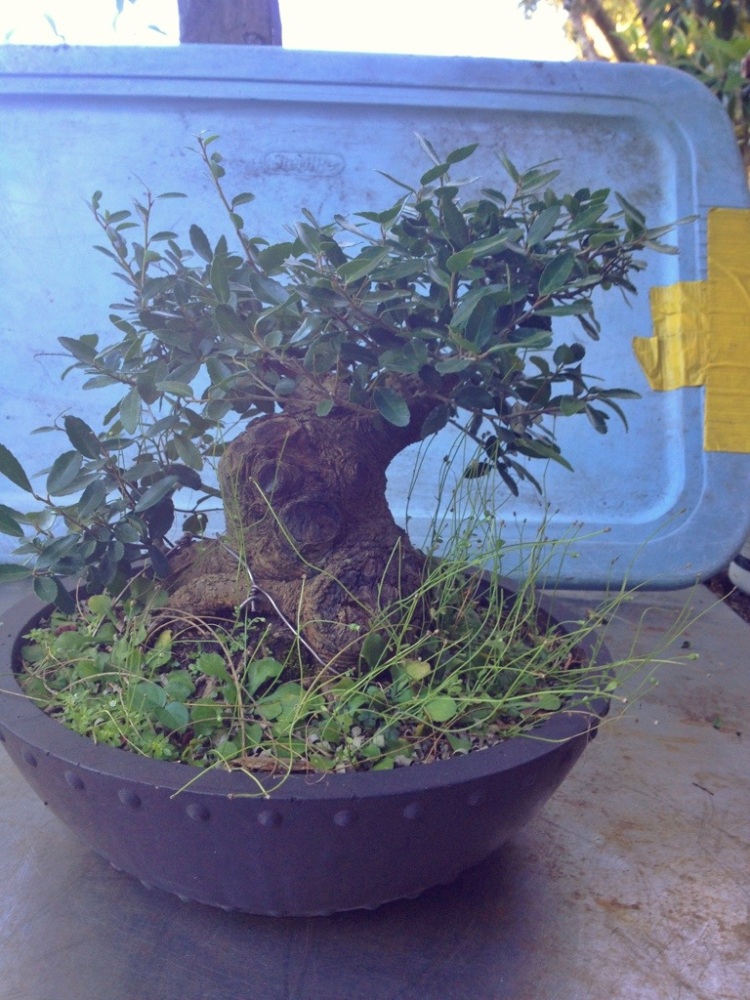
This is the side view. This view shows off nicely all the weeds I’ve been cultivating.
I hate to tell you this, and most experienced bonsa-ists will agree with me when I say it, but the tool that is best suited for weed pulling is….the tweezer.

Chopsticks are very useful as well; if you’re dexterous enough.

Many weeds require that the entire root system be removed. Or you don’t really accomplish much.

The weed will just grow back.
I weed, then remove the top layer of soil in case there are weed seeds present

I fertilize now (it is early November in Florida. I am cutting the ilex back so I want some growth before winter. I will have to protect the new growth until it hardens off though) as well.

Then I put a fresh coat of bonsai soil on top and add my pre-emergent weed preventer.
Time to do some carving.

Just about all of that has died back. The reason why: there were too many cuts done in the same area at the same time and the flow of sap was impeded by those cuts. Simple reason. It would have been better if I had either cut one or two a season and left the others branches to speed the healing process or if I left a stub and didn’t make a flush cut. Then I would have left the route that the sap flows open.
The ilex is similar to the azalea in the case that, when doing significant cuts, it’s best to be conservative in so doing.
It’s also similar in the case that new branches must be grown occasionally as the old ones will become so woody that the sap flow is diminished, and the branch slowly withers. (I discuss this a bit in this post)
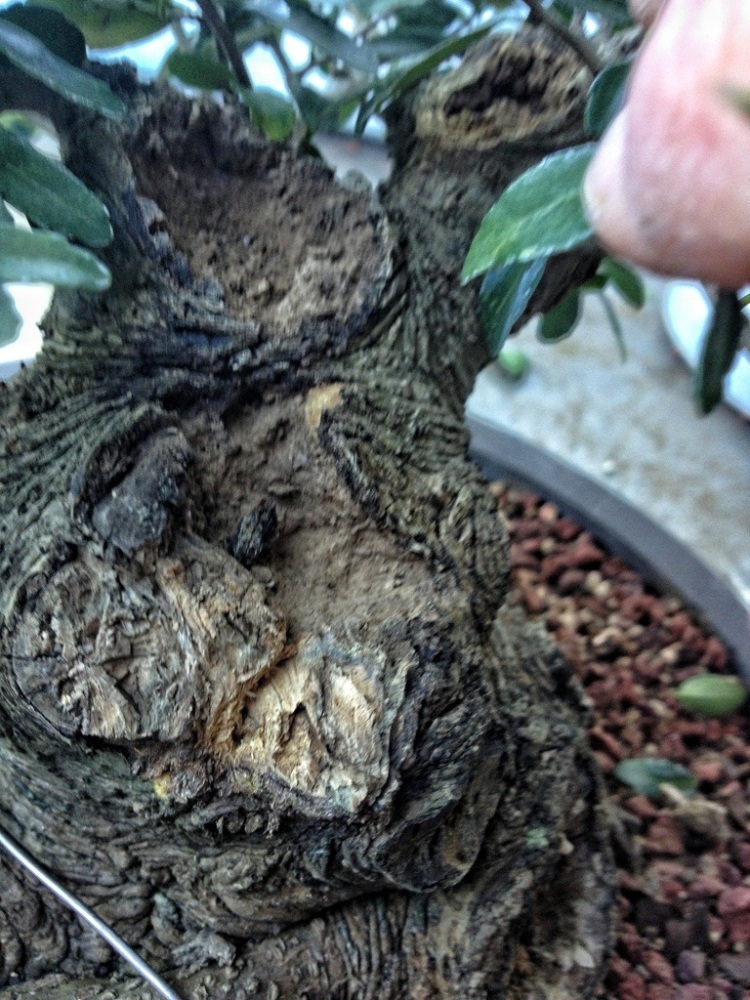
You can see how rotten the wood was. I just scraped it out with my scissors.

There’s the front. If you look closely you’ll see several wounds that need addressing.
In fact

That’s a scissor coming through from the back.

My goal in this carving is, first, make it aesthetically pleasing, second, make it believable and third, to make it last.
To achieve the first two I must ensure that I accomplish the last.
This entails making a route for the water to drain.

Like so.
What’s surprising is the extent that the living bark still there.

Like here.
Carving done; let’s get to wiring.
Here is a tip that, after helping out in some workshops recently, most people don’t know about.
This is an unadulterated bit of the tree
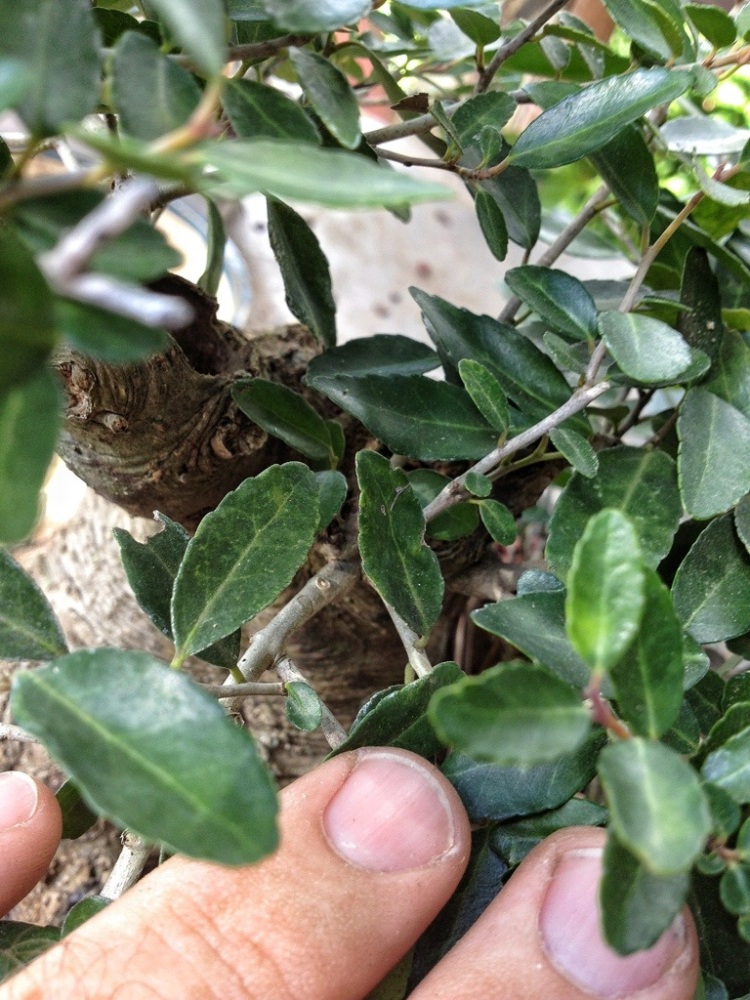
When the teacher tells you to clean it up, do it like this:
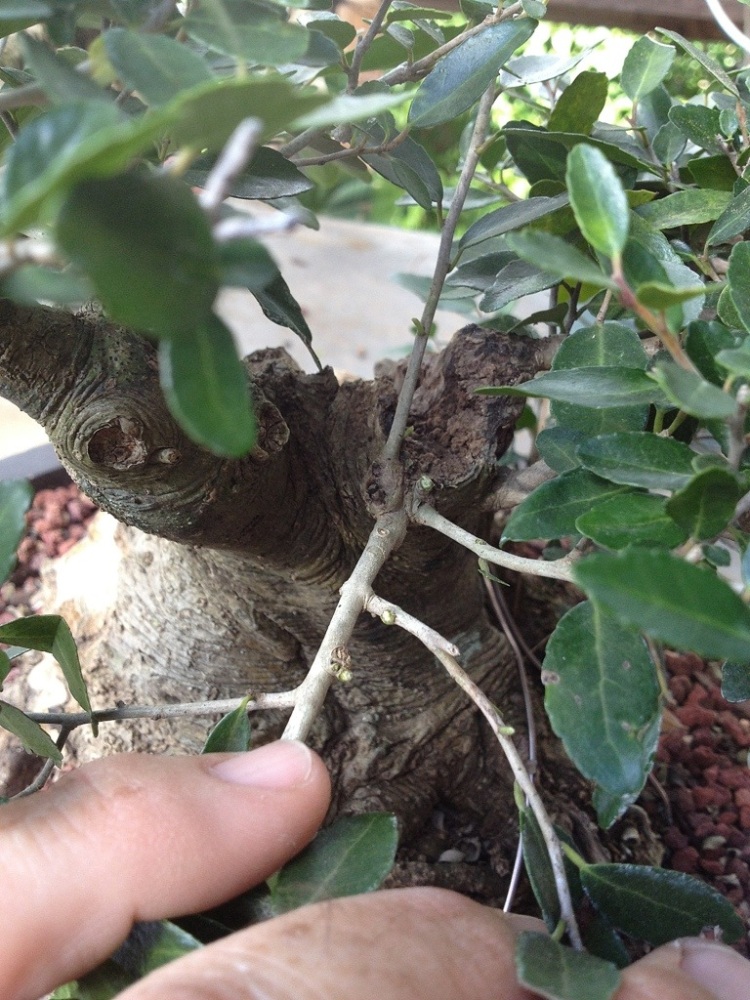
Leave the growing tips but remove the interior leaves. This makes it easier to wire. Way easier. Trust me.
Next, wire.

Before applying the wire. Note the naked interior.
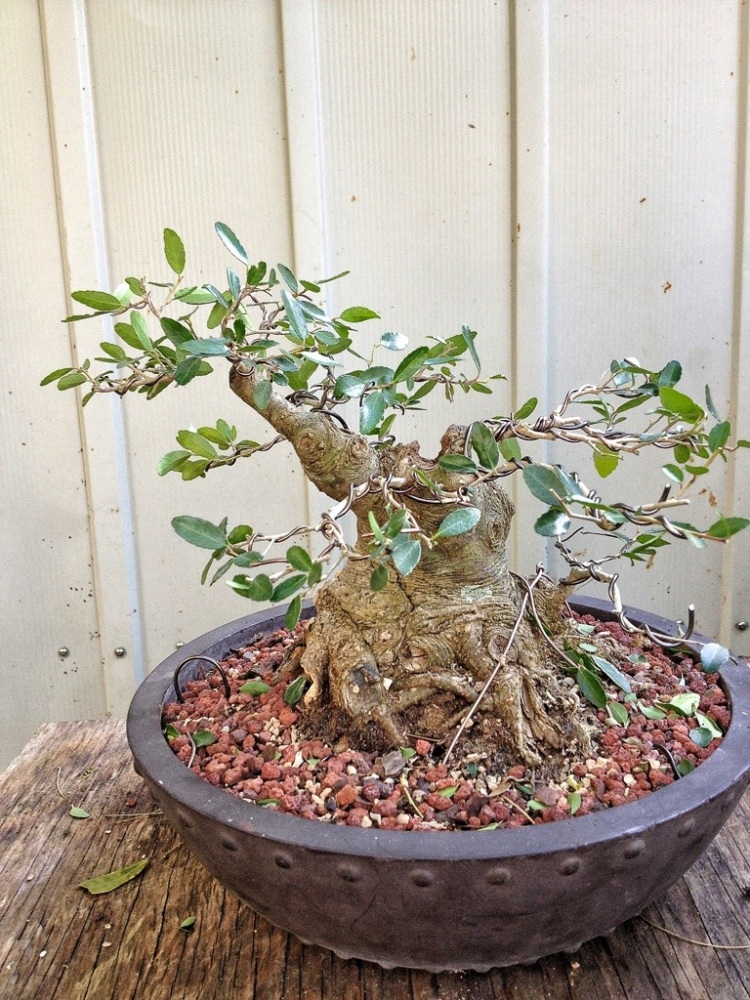
Front, back, and side and side.
I plan on using a wood hardener on this tree. I have a big one I carved and experimented on but the wood just continues to deteriorate. One brand of wood hardener is called MinWax. It’s kinda like a resin that penetrates the pores of the wood and harden into a solid, non-decaying substance.
Next tree is the gumbo limbo

I quote “I can do this tree in one cut”

First though, the base. This will obviously be a bunjin tree. Or literati if you prefer.
A small digression, if you would. I’ve been in bonsai a while. I read a lot. When I first started people used the word “mame” for a small tree. Now they use shohin. Fine. It’s more correct in Japanese. Maybe.
This year, the hip word is “chuhin”. I’ve read it ,but no one, until this year, has ever used it in my hearing.
So when we say literati or bunjin (or, bunjin-gi, as it should be) I smile a bit.
Digression done. Sorry if you’re offended dude. Really.
Gumbo limbo: in French “chat chapeau” in Spanish “el gato in a sombrero”.
Sorry.
Bursera simaruba. It is in the same family as frankincense and myrrh. It’s a very neat tree whereas it will root as a cutting at any size.
There was a tree on the island of St. John, about a 5 inch trunk, that broke off about 5 feet from the base in a hurricane in 1995. The bottom re-sprouted quickly. The top landed upright, touching the rocky ground. It dod nothing for about 9 months until the rainy season and then put down roots.
The early settlers would cut down trunks and use them for fence posts. Which would quickly root into the ground and start growing.
The resinous sap is used in everything from incense to an anti-inflammatory used to treat gout.
It was also the principal wood used by the wood carvers that carved carousel horses.
In bonsai, it is not uncommon for an artist, while trudging through the coastal marshes in search of buttonwood, to cut an interesting branch off a tree and bring it back to root and grow.
The common names are varied. Some just call it turpentine tree or, my favorite is “the tourist tree”.
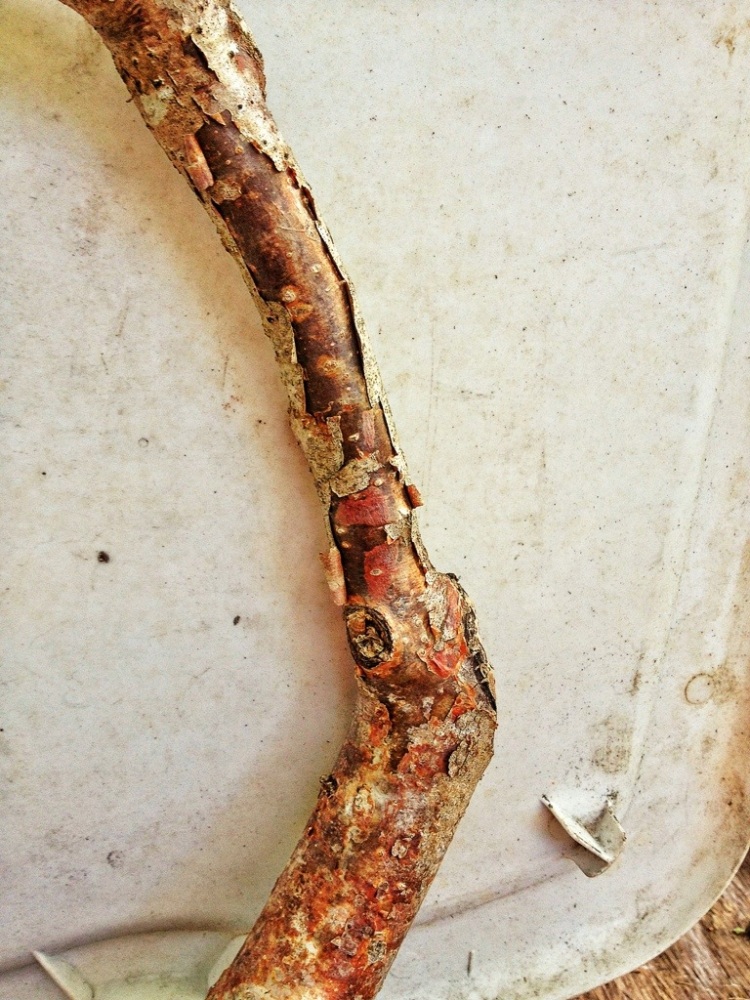
Why? There bark is red …..
and peeling.
As you can see.
My one cut:

Elegant and simple.
Next tree is one I got from my friend Tony down in Cape Coral.
A spectacular shohin (or chuhin- hee hee) tree with great character and very sexy movement.

It looks to me it might be a bit of side root off a larger tree.

Very unique shape. The front is deadwood that will need to be dressed and then treated with a wood hardener.
First, though, lookie what I found:
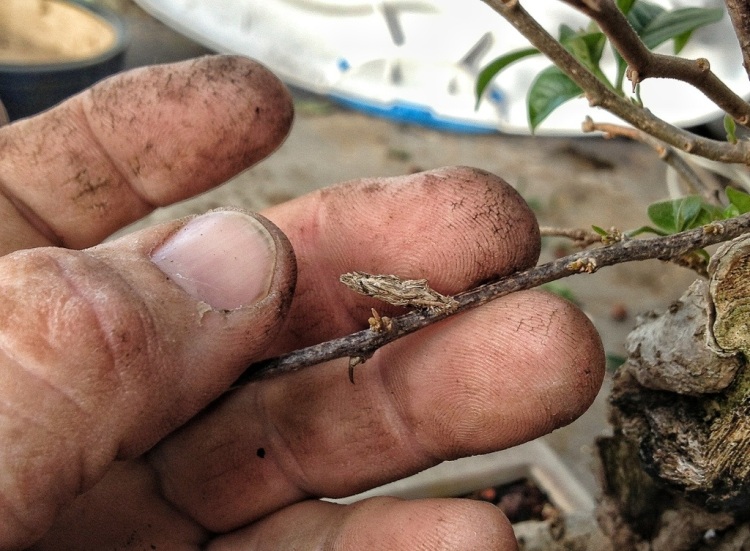
Bag worms. There were three.
Tony, check your trees!
These suckers will girdle a branch and kill it.

In the details you can see the deadwood deterioration quite clearly.
On a bougie it’s usually sufficient just to use a wire brush to clean it up.
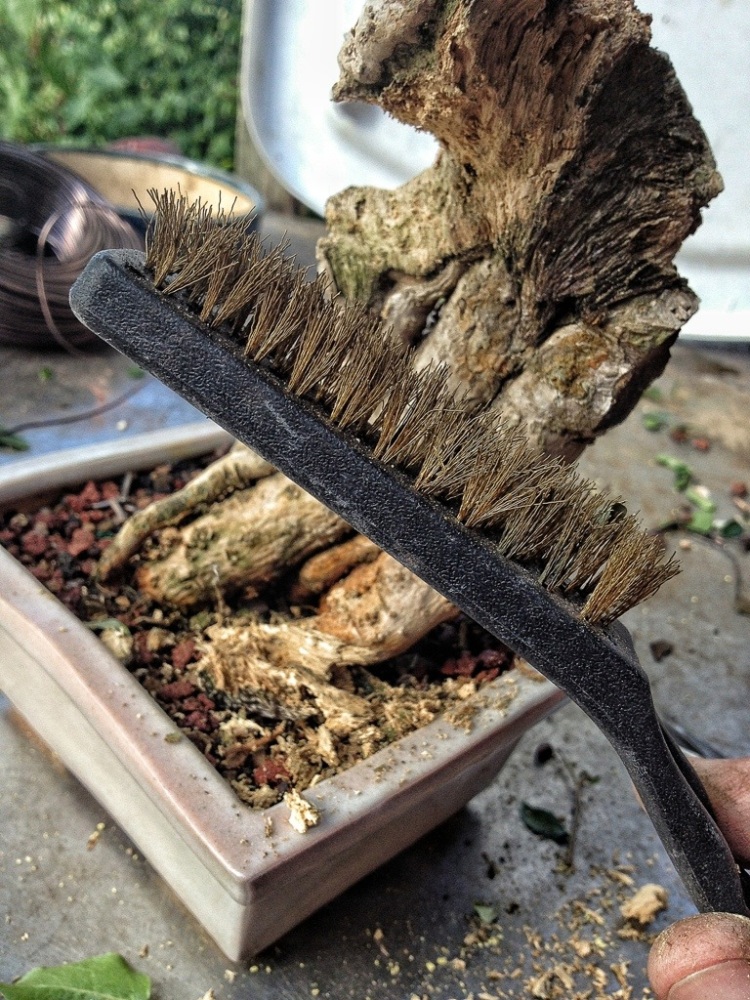
But I cheated, my carving tool was already out for the ilex so…..grrrrr..
Now, the pot it was in did not have very good drainage and it was totally unsuitable for the style (sorry Tony)

Plus I have this nice Taiko Earth oval pot (Rob Addonizio) on hand. I’m not really repotting here. I’m replanting. The new pot is slightly larger than the previous one and I’m not raking the roots at all.

Isn’t that a sweet pot? Check out Rob’s blog here.
Some new soil

And there it is.
What have we learned about these three trees? They all grow in Florida quite easily. They make great bonsai trees. They have odd characteristics that lend themselves to be either despised or loved.
And what links them together in a tale?
Not much except that I worked on them on the same day.
Well, there is a rich historical drama I could weave about the discovery of Florida and the New World. Where common men became as kings and kings were destroyed. But I won’t here. That’s a long story.
Maybe, if we have time to sit and have some beers, I’ll tell it. Cheers!
If you enjoy reading this blog please follow it and share. Thanks


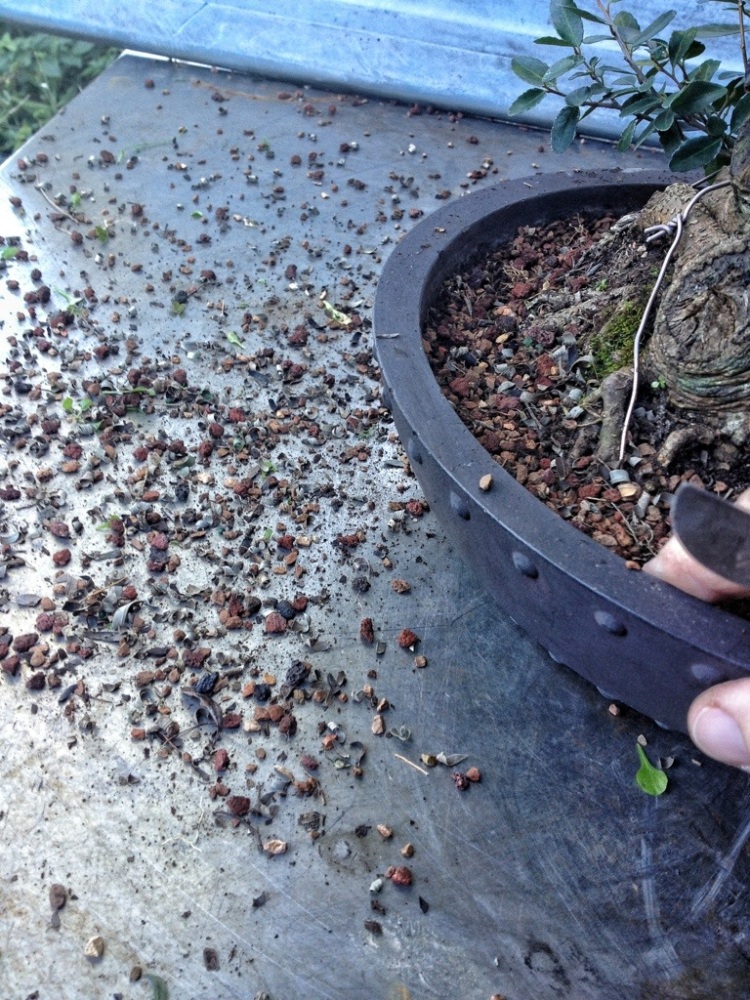









Adam,
Three trees, three directions, and great info on each. Great post!
Rob
LikeLike
Thank you sir!
LikeLike
Nice info, interesting read, thanks. I have a big pot with a 4 year old vine in it, I should take some pics and ask opinions: I don’t know what to do with it.
LikeLike
I’d like to see. My email is adamaskwhy@yahoo.com
LikeLike
“A tale of three bonsai trees | Adam’s Art and Bonsai Blog” was in fact a very good article and I personally was in fact very glad to discover the blog post. Thank you-Moses
LikeLike
Thank you for your blog. I have learned a lot from reading your work. I have several yaupons I am working on that will benefit from this post. Thanks again!
LikeLike
You are welcome!
LikeLike
I wish you had explained or given more tips for pruning the gumbo limbo; how they heal etc. They seem really different from your average tree – or is it just my fear showing?
But thank you for this wonderful blog!
LikeLike
They heal much like a regular tree actually. The callous rolls over the wound.
LikeLike